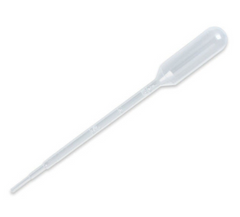Unit 5: Hematological Samples (Cram)
1/32
There's no tags or description
Looks like no tags are added yet.
Name | Mastery | Learn | Test | Matching | Spaced |
|---|
No study sessions yet.
33 Terms
True or false: Tubes with anti–coagulatant in them should always be filled to their labeled capacity
True. If they are filled with only a small amount of blood, the sample will be diluted
Supernatant attained when a blood sample has been mixed with an anticoagulant, then centrifuged
Plasma
Sample in which no anticoagulant has been added, it is allowed to clot
Serum

Which anticoagulant does this tube contain?
EDTA
What does EDTA stand for?
Ethylene diamine tetra acetic acid

Which anticoagulant does this tube contain?
Heparin


Which anticoagulant does this tube contain?
Sodium citrate


Which anticoagulant does this tube contain?
Potassium oxalate


Which anticoagulant does this tube contain?
Serum seperator tube (aka STT tube)
Which colour tube is sterile and empty?
Red top

Which tube is used for coagulant screening and bovine blood?
Sodium citrate (blue top)
Which tube is only used for testing glucose levels in the blood?
Potassium oxalate (grey top)
Which tube is the most common anti–coagulant used? It has the least effect on the morphology of blood cells
EDTA (purple top)
Which tube contains a gelatin–like substance which, when centrifuged, seperates the blood cells from the serum. This makes the serum easy to remove without contamination
Serum separator tube (tiger top)
What other colour can STT tubes be?
Yellow
Which tube contains a natural anticoagulant that is found in the body?
Heparin
Why should heparin tubes not be used on dog and cat blood?
Changes WBC morphology
Storage of blood for longer than ____ hours may result in some changes in the morphology of the cells
2
What is the best method of storing blood if a sample has to be delayed in processing: room temperature, refrigerator, or freezer?
Refrigerator. Excesive time at room temp and freezing both cause cell lysis
When obtaining a serum sample, which tube do you use?
Empty (red top)
What is the range of time it takes for a serum sample to clot at room temperature?
20–30 minutes
Can a serum sample be allowed to clot in the refrigerator?
NO! It can't go in the fridge until it has clotted
What tool do you use to collect serum from a clotted sample in a tube?
Pasteur pipette

Can you freeze serum?
Yes (unlike whole blood which lyses)
Should you use a tube with an anticoagulant to collect a plasma sample?
Yes
At what power and how long should you centrifuge serum and plasma samples?
2000–3000 rmp for 10 minutes
Which day should you not send blood sample out on?
Friday
What are the 9 tests included in a CBC?
PCV or HCT (hematocrit)
Examination of serum (colour, amount, etc.)
Total protein (refractometer)
RBC count
RBC & platelet morphology
RBC indices
Reticulocyte count
WBC count
WBC differential
Which part of a CBC is only done if the patient is anemic?
Reticulocyte count
What are some RBC indices?
Hemoglobin, MCV, MCHC, and MCH
What does MCV stand for?
Mean cell volume (measures average cell size)
What does MCHC stand for?
Mean corpuscular hemoglobin concentration (percent of the RBC that contains hemoglobin)
What does MCH stand for?
Mean corpuscular hemoglobin (average amount of hemoglobin per RBC, not percent like MCHC)